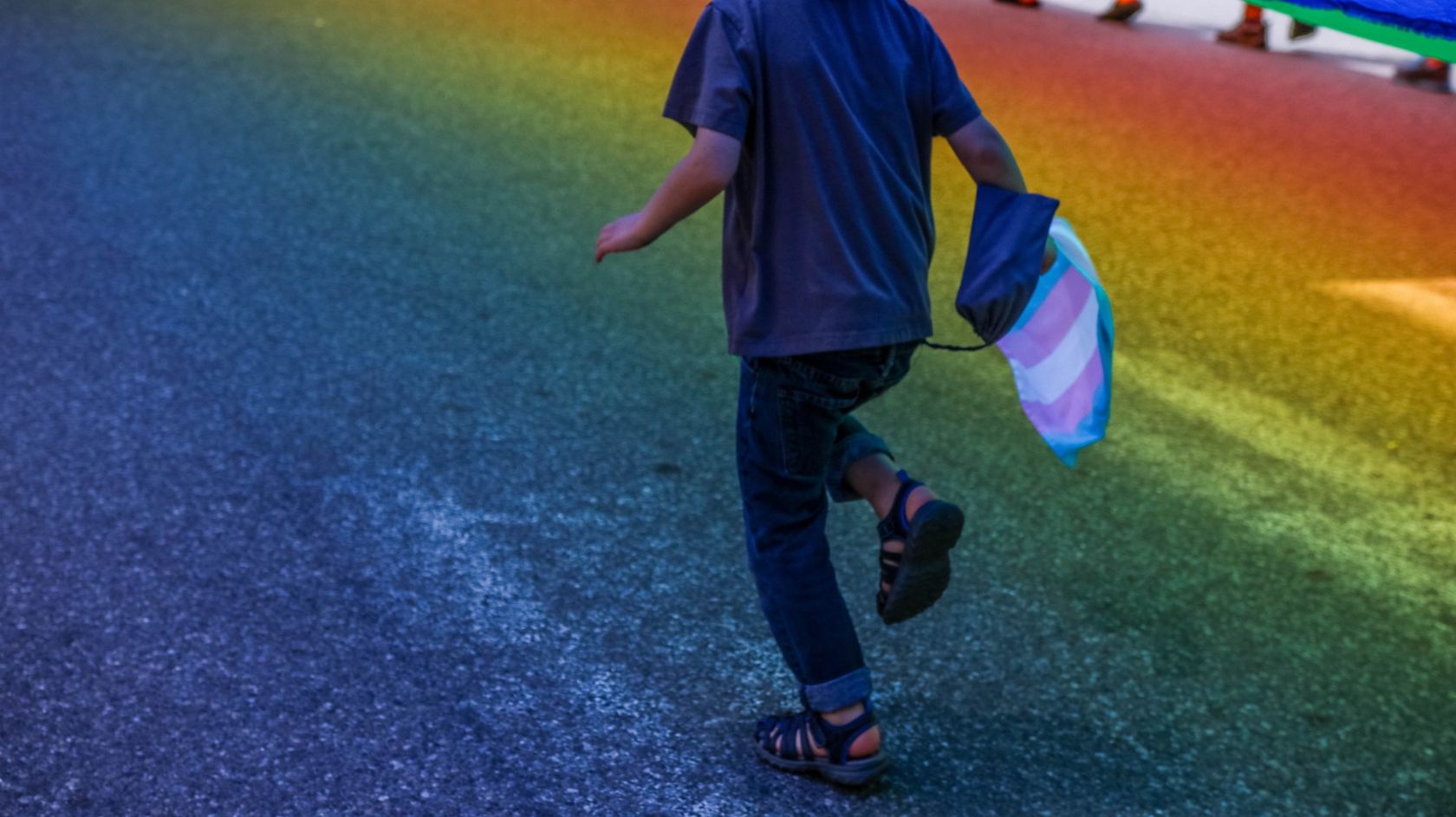Adolescence is a critical time of growth, self-discovery, and, unfortunately, significant challenges. Some teens struggle with behavioral issues, emotional regulation, mental health disorders, and unhealthy coping mechanisms that interfere with their daily lives. When...
Recent Posts
After Residential Treatment: Helping Teens Transition Back Home
Residential treatment can be life-changing for a teen struggling with mental health, trauma, or behavioral challenges. But what happens after your child returns home? The transition back to daily life is a critical period — one that requires patience, structure, and...
How Residential Treatment Supports Teens with Co-Occurring Disorders
Navigating adolescence is challenging enough, but for teens grappling with co-occurring disorders, the journey can feel insurmountable. Co-occurring disorders, also known as dual diagnoses, refer to the presence of two health disorders occurring at the same time....
A Parent’s Guide To Navigating Grief In Teenagers
Grief is a complex emotion that can be challenging for teens to navigate. According to the Childhood Bereavement Estimation Model (CBEM), 1 in 12 children and teens in the U.S. will experience the death of a parent or sibling by age 18. While grief is usually...
How Long Is Residential Treatment for Teens?
If your child is about to begin a stay at a residential treatment center, you’re bound to have a lot of questions. What types of therapy will be involved? Will our family be allowed to visit? And, of course, how long is a teen residential treatment program? In this...
Is Residential Treatment Considered Inpatient or Outpatient?
If you’ve never engaged with residential treatment centers before, it’s common to ask: is residential treatment considered inpatient or outpatient? Well, the answer is simple: our residential teen treatment centers are considered inpatient because teens stay at our...
Benefits of Residential Treatment for Teens: When to Choose It Over Other Treatment Programs
When seeking help for your teen, it’s important to know the benefits of residential treatment teens can take advantage of. For teens suffering from mental health disorders, behavioral disorders, psychological disorders, or addiction issues, there are a variety of...
Does Insurance Cover Teen Residential Treatment?
How Much Does Residential Treatment Cost? Cost of Residential Treatment The cost of residential treatment varies between each Residential Treatment Center (RTC). It may range from free (which is very uncommon) to tens of thousands of dollars per month. And if you are...
3% of Teens Identify as Transgender or Gender Nonconforming in America
How Many Transgender Teens Are There? Approximately 150,000 American teens (ages 13 to 17) identify as transgender in the United States today. Of course, there is no general age in which people typically “discover” or “come out” as transgender. Nonetheless, more and...
Recognizing Signs of Teen Depression: A Guide for Parents
It is very common for children and adolescents to experience occasional moodiness or periods of sadness. The causes of teen depression are multifaceted, involving biological, environmental, and social factors such as bullying, mental health conditions, stressful life...
Distinguishing Between Signs of Depression or “Moodiness” in Teens
Parents often wonder how to distinguish normal teenage mood swings and rebellions from actual symptoms of depression. Fortunately, there are several ways to tell. As many as 1 in 5 teenagers will experience depression at some point during adolescence. Unfortunately,...
Social Anxiety Disorder in Teens: Signs, Symptoms, and How to Help
What is Social Anxiety Disorder? Social anxiety disorder (SAD) affects 1 out of 3 adolescents between 13 and 18 years old. Over 19 million people across America suffer from social anxiety disorder (SAD) today, including a significant number of young adults. It is...
Teen Depression Prevention: Parent, Friend, and Support Tips
At any given time, one out of every five teenagers is experiencing major depression. If you are a parent to an adolescent or teenager, you are likely familiar with the moodiness inherent to this age group. Mood swings are common, as teens are experiencing a vast...
How to Talk to Your Teen About Depression
Teen depression is more common — and more serious — than many parents realize. While emotional ups and downs are a normal part of adolescence, persistent sadness, irritability, or withdrawal may point to something deeper. Knowing how to talk to your teenager about...
Managing Expectations With Teens
As a parent of an adolescent, teen, or young adult, your attitudes, actions, and beliefs can have a tremendous impact on your child’s well-being. Your teen is experiencing the challenging process of transitioning from childhood to adulthood. As someone who has gone...
Important Teen Mental Health Statistics for Parents
TEENAGE MENTAL HEALTH STATISTICS
Mental illness is a disorder of brain function. There are many different classes and categories of mental health disorders, and those who suffer from mental illness do not do so by choice. Various factors can cause and/or contribute to the development of mental illness, and while it may be different for each person, suffering from a mental health disorder can have a significant impact on one’s life and overall wellbeing. Having a mental illness often makes even the most mundane things you do in life hard. All areas have the potential to be affected by mental illness: work, school, and socializing with other people.
Despite what many believe, mental illness is common in teenagers. Approximately one in five teens (aged 12 to 18) suffer from at least one mental health disorder. Mental health disorders can have a significant impact on daily life and overall wellbeing, and depending on what type, may affect relationships, physical health, academic performance, etc. While depression and anxiety are the most commonly diagnosed mental illnesses, teens can also suffer from eating disorders, personality disorders, substance-abuse disorders, psychotic disorders, and more.
The adolescent and teenage years are a critical period where youth begin their transition from childhood to adulthood. Because this formative period is so crucial in shaping how young people will function as adults, ensuring adolescents and teenagers are fully supported in all facets of life, including mental health, is critical for fostering this transition.
Researchers believe that brain changes in adolescence increase a teen’s vulnerability to depression and anxiety, and play a role in the severe gender disparity in these disorders.
DEPRESSION
More than 11% of adolescents and teens report experiencing at least one major depressive episode in the last year, and the numbers continue to climb. Major depression affects everyone differently but is typically marked by significant and pervasive feelings of sadness that impair the ability to concentrate or fully engage in everyday activities.
The mental health of adolescents and teenagers seems to be worsening. Rates of young people with severe depression have increased from 5% in 2012 to 8% in 2015.
- 7% of youth (or 1.8 million adolescents and teens) experience severe depression. These youth experienced very serious interference in school, home and in relationships.
- More than 5% of American teenagers report having a substance use or alcohol problem
- 50% of mental health issues are established by the age of 14, and 75% by age 24.
There is a nearly two-fold increase in mood disorders from 13 to 18, from 8.4% to 15.4%
Depression and bipolar disorder affect approximately 14% of youth age 13-17
- Adolescent and teenage girls are two times more likely to experience depression than boys. The reason for this is likely biologically based, as the brain regions affected by depression have high concentrations of sex hormone receptors.
Anxiety
Anxiety disorders are also hugely common in adolescents and teenagers. Nearly one in three adolescents and teenagers meet criteria for an anxiety disorder by the age of 18. And while there are various types of anxiety disorders experienced by young people, phobias and separation anxiety tend to be seen the most. As peer relationships become more and more important, social anxieties are more likely to develop. Nearly one in three adolescents and teenagers meet criteria for an anxiety disorder by the age of 18.
-
- Generalized anxiety disorder: 2%
- Specific phobia: 19%
- Social phobia: 9%
- Separation anxiety: 7%
- PTSD: 5%
- Panic disorder: 2%
As with depression, anxiety disorders occur more frequently in females than males:
- Separation anxiety: 9% females, 6% males
- PTSD: 8% females, 2% males
- Social phobia: 11% females, 7% males
- Specific phobia: 22% females, 16% males
- Panic disorder: 2% females, 2% males
SUBSTANCE ABUSE
Because a teenager’s brain structure is not fully developed, their brains are more inclined to experience radical, and irreversible change when using drugs. Specifically, drug use impedes the development of brain circuits conducive to healthy impulse control, thus having lifelong effects. Because of this, early exposure to drugs and alcohol can more quickly lead to dependence than if exposure occurs in adulthood. Early exposure to drugs and alcohol is also linked to the development of mental health disorders like psychosis.
The various changes occurring in the brains of teens and adolescents allow for learning and thriving, but are also thought to make this population more susceptible to lifelong damage than at other times. Early and sustained exposure to drugs and alcohol can more quickly lead to dependence than drug and alcohol use in adulthood and is also linked to the development of mental health disorders like psychosis.
Adolescents and teenagers in the United States use drugs and alcohol at rates that might be shocking to some:
- 35.6% have used marijuana or hashish in the past year
- 14.3% have used an illicit drug other than marijuana in the past year
- 55.6% have used alcohol in the past year
- 12% have illicitly used a prescription drug in the past year
- 6.7% have used amphetamines in the past year
Studies indicate adolescents and teenagers are at a significantly heightened risk for developing symptoms of drug dependence when drug use starts before age 18.
- 3x risk with marijuana
- 2x risk with benzodiazepines (e.g., Ativan, Valium, etc.)
- 5x risk for cocaine, stimulants, and opioids
Other teen substance abuse statistics include:
- Marijuana use is linked to early onset of psychosis in teens and young adults already at risk for developing a psychotic disorder
- Daily use of marijuana doubles the risk of onset of a psychotic disorder
- Persistent marijuana use is connected to a declining IQ (which many believe to be irreversible, even if use stops)
ADHD
In the adolescent and teenage years, it is very common for young people to start pushing for more independence, engaging in more risky behavior, and challenging authority. Essentially, the teen brain is wired to test limits and individualize from parents. And while some do this in a “healthy” way, some teens, especially those with Attention-Deficit Hyperactivity Disorder (ADHD), carry. Yet children with ADHD often carry this natural tendency to extreme
ADHD, especially in adolescents and teens, is linked to impulsive behavior and dangerous risk-taking. Studies indicate this is due to the slower development of certain brain regions.
- More than 25% of youth with ADHD repeat a grade; 7% of youth without ADHD repeat a grade.
- Adolescents and teenagers with ADHD are 35% more likely to be involved with the law (more likely to be arrested and/or jailed)
- Newly licensed drivers (age 16 in many states) with ADHD are at an over 30% increased risk of being involved in a car accident when compared to peers without ADHD
- A study of health insurance records showed that severe injuries like broken bones are three times more likely in adolescents with ADHD, and that were much more likely to have multiple injuries over time.
- Females with ADHD are over 2x more likely to develop depression in adolescence
- Youth with ADHD are 4x more prone to using substances and/or alcohol
Psychosis
The late adolescent and teenage years are considered “peak years” for the onset of psychotic disorders, including bipolar disorder and schizophrenia.
- 100,000 adolescents and teenagers experience their first psychotic episode between ages 15 and 25.
- Research around genetics suggests schizophrenia is a disorder linked to the process of “pruning” in the developing brain. There are higher levels of pruning-related proteins in the brains of individuals with schizophrenia, and the onset of schizophrenia matches up closely with when pruning is occurring in the part of the brain linked to schizophrenia.
- 52% of those with a first episode psychosis make a full or partial functional recovery with early intervention, vs. just 15% receiving typical treatment.
With mental health conditions being so common in teenagers, it is hugely important for parents and caretakers to be knowledgeable about the signs and symptoms. Teens may present differently, but there are certain signs common to the majority of mental health disorders to be on the lookout for.
- Behavioral changes
- Changes in appearance
- School or work performance
- Health issues
Detecting a mental illness can be tricky since teenagers go through a number of behavioral, social, and physical changes during adolescence. The good news is, if your teen has a mental health condition, there are a number of effective treatments. Treatment looks different for everyone, depending on the specific mental health disorder and other individual factors. Nonetheless, enhancing social skills, problem-solving skills, and self-confidence can help prevent mental health problems for some, and help others manage the symptoms of pre-existing conditions.
Even though so many young people struggle with mental illness, less than 50% of them receive treatment for their condition. If you or someone you know may be struggling with a mental health disorder, it is best to consult a mental health professional as soon as possible. Early identification and effective treatment intervention is the key to successfully managing the disorder and preventing future impairment. Polaris Teen Center provides comprehensive, residential treatment for mental health and co-occurring disorders. For more information on how to help your child or teen, please contact our admissions staff at 1-844-836-0222 or visit our website.
Polaris Teen Center is a residential treatment facility for teens and adolescents suffering from severe mental health disorders. Our highly accredited facility is fully licensed and certified in Trauma Informed Care and is a part of the Behavioral Health Association of Providers (formerly AATA).
Previous Post
Next Post
Related Posts
A Parent’s Guide To Navigating Grief In Teenagers
Grief is a complex emotion that can be challenging for teens to navigate. According to the Childhood Bereavement Estimation Model (CBEM), 1 in 12 children and teens in the U.S. will experience the death of a parent or sibling by age 18. While grief is usually...
How Long Is Residential Treatment for Teens?
If your child is about to begin a stay at a residential treatment center, you’re bound to have a lot of questions. What types of therapy will be involved? Will our family be allowed to visit? And, of course, how long is a teen residential treatment program? In this...
Benefits of Residential Treatment for Teens: When to Choose It Over Other Treatment Programs
When seeking help for your teen, it’s important to know the benefits of residential treatment teens can take advantage of. For teens suffering from mental health disorders, behavioral disorders, psychological disorders, or addiction issues, there are a variety of...
Does Insurance Cover Teen Residential Treatment?
How Much Does Residential Treatment Cost? Cost of Residential Treatment The cost of residential treatment varies between each Residential Treatment Center (RTC). It may range from free (which is very uncommon) to tens of thousands of dollars per month. And if you are...
3% of Teens Identify as Transgender or Gender Nonconforming in America
How Many Transgender Teens Are There? Approximately 150,000 American teens (ages 13 to 17) identify as transgender in the United States today. Of course, there is no general age in which people typically “discover” or “come out” as transgender. Nonetheless, more and...
Recognizing Signs of Teen Depression: A Guide for Parents
It is very common for children and adolescents to experience occasional moodiness or periods of sadness. The causes of teen depression are multifaceted, involving biological, environmental, and social factors such as bullying, mental health conditions, stressful life...
Distinguishing Between Signs of Depression or “Moodiness” in Teens
Parents often wonder how to distinguish normal teenage mood swings and rebellions from actual symptoms of depression. Fortunately, there are several ways to tell. As many as 1 in 5 teenagers will experience depression at some point during adolescence. Unfortunately,...
Social Anxiety Disorder in Teens: Signs, Symptoms, and How to Help
What is Social Anxiety Disorder? Social anxiety disorder (SAD) affects 1 out of 3 adolescents between 13 and 18 years old. Over 19 million people across America suffer from social anxiety disorder (SAD) today, including a significant number of young adults. It is...
Teen Depression Prevention: Parent, Friend, and Support Tips
At any given time, one out of every five teenagers is experiencing major depression. If you are a parent to an adolescent or teenager, you are likely familiar with the moodiness inherent to this age group. Mood swings are common, as teens are experiencing a vast...








